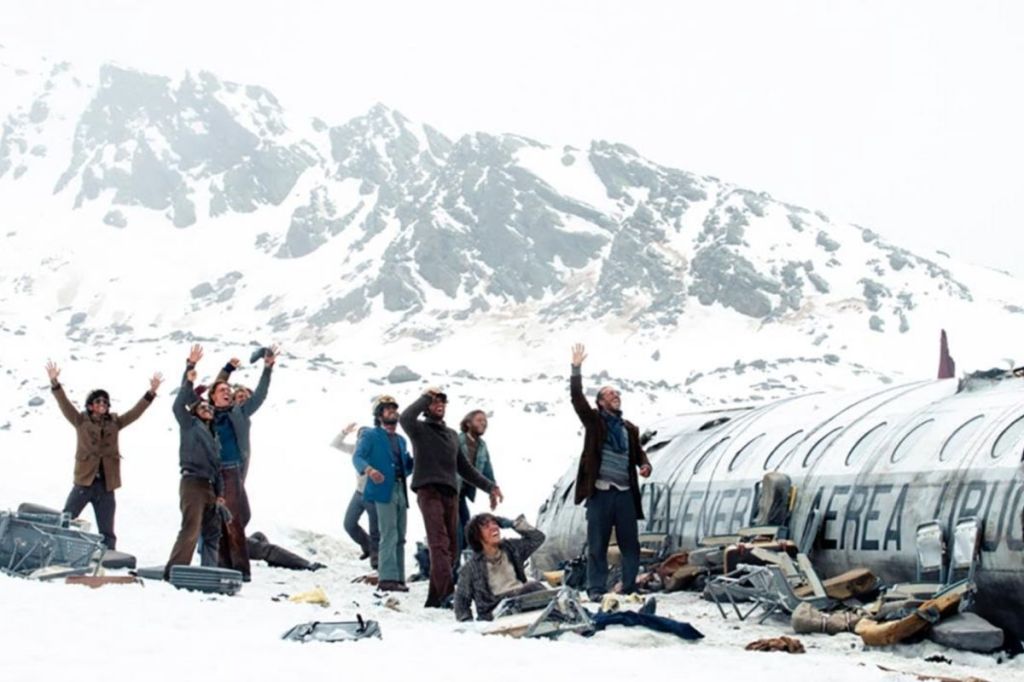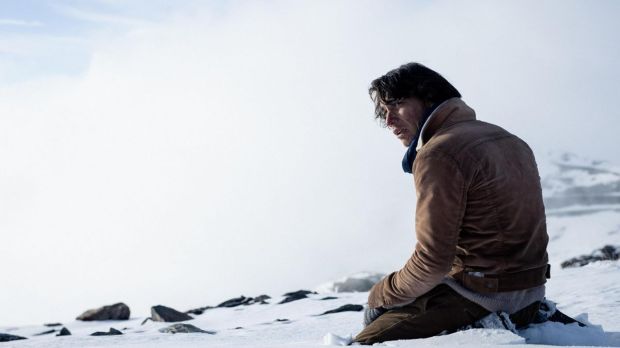This article contains spoilers about Netflix’s Society of the Snow.
Society of the Snow, a new Spanish-language film on Netflix, is a challenging but rewarding retelling of the 1972 “Miracle of the Andes.” A plane was approaching Chile from Uruguay when it crashed in the snow-covered mountains, killing 12 and leaving 33 survivors — mostly a team of young rugby players and their families. Only 16 would live to be rescued 72 days later, and only after two teammates, Nando Parrado and Roberto Canessa, spent 10 days defying death in the mountains to find help.
If all of this sounds familiar, it is the same story behind the 1993 film Alive based on Piers Paul Read’s book of the same name. Alive offered a compelling glimpse into that terrible ordeal: the bitter cold, the vicious injuries, the deadly avalanches — and the horrible truth most associated with the story: that the survivors, after intense deliberation, resorted to eating the bodies of the dead to survive.
It also drew out the spiritual context of that ordeal. The survivors were Catholics from a Christian Brothers school, who later sought out and received forgiveness through the Church for what transpired in the mountains. Indeed, Read was approached to write Alivebecause of his own Catholic faith. (“They thought that my Catholicism would ensure a high-minded, even spiritual, interpretation of their story.”) The film has characters discussing the reality of God and praying the Our Father and Hail Mary, and closes with Aaron Neville — himself a devout Catholic — singing “Ave Maria” over the image of a cross.
What, then, does Society of the Snow add to the picture? First, a heightened authenticity: unlike Alive, parts of it were filmed at the actual crash site; the book on which it’s based features the accounts of all 16 survivors; and the talented Spanish-speaking cast and impressive filmmaking bring a vivid and at times brutal realism to bear. The survivors, upon seeing an early screening, broke into “thunderous applause” and wept. But more importantly, Society also brings a deepening of both dimensions of the story — both the horrifying depths of survival, and the uplifting truths of faith.
The direction of J.A. Bayona (The Orphanage) draws us right into the mounting desperation of these young men. When some in the group, after a series of intimations, finally break down and resort to desperate measures, the ominous scene conveys the crossing of a threshold into the animalistic, with one of the horrified survivors praying frantically from within the fuselage. Society doesn’t make a spectacle of it — in a respectful move, the gruesome details are mostly kept off-screen — but it does plunge us into this tremendous physical and mental struggle, and the spiritual struggle that follows. The teammates question themselves and each other; they question God; they wonder why all this had to happen. We, of course, question what on earth we would do in their shoes.
At the same time, this awful fight for survival is permeated by great faith, hope, and love. Early in Society, we see the young men attending Mass, where the priest delivers a homily — appropriately — on the temptation of Christ as he fasted in the desert for 40 days: “One does not live by bread alone.” At one point after the crash, the survivors massage each other’s feet and make up silly poems, together warding off both frostbite and insanity. When an expedition finds the tail section in the mountains, they bring back the spoils for the group, Parrado triumphantly offering a piece of chocolate — and encouragement (“We have to try”) — to his friend. When Parrado and Canessa venture out into the mountains, the latter falls ill and vomits, Parrado silently cradling his head. Later, bearing his friends’ rosaries around his neck, Canessa silently cradles their remains and buries them, making the sign of the cross.
Most powerfully, the narrator — Numa Turcatti, who isn’t featured in Alive — becomes an icon of Christian love. “He radiated peace,” one survivor remembers, “he never gave up, and when he came near me, I felt like Jesus Christ himself was among us, with such mercy and compassion in his eyes.” Turcatti is one of the last holdouts against the group’s cannibalism, but writes in his last will and testament: No hay amor más grande que el que da la vida por sus amigos. (There is no greater love than giving your life for your friends.) Turcatti doesn’t survive, and thus narrates the film from eternity — a beautiful move that not only honors the victims of the crash, but also gestures toward the truth of their faith.
This collision of cannibalism and Catholicism in Society of the Snow brings to mind, inevitably, the mystery of the Eucharist. Indeed, in the homily earlier in the film, the words of consecration are spoken: “Take this, all of you, and eat of it. This is my body … ” The Andes survivors themselves made the connection: One noted that they had found strength to survive by drawing a parallel to the Last Supper.
The surface parallels have always been there. Jesus’ followers were scandalized by his bread of life discourse, taking him to be suggesting something ghoulish: “How can this man give us his flesh to eat?” (John 6:52). And early Christians, in talking about eating and drinking the Lord’s Body and Blood in secret, were accused of being a cannibalistic cult — a charge that still lingers among skeptics. (“Is this a weird metaphor for cannibalism?” an incredulous young Elon Musk asked about the Lord’s Supper.) Indeed, the Catholic anthropologist René Girard argued that the connection is no accident: the Eucharist summarized all archaic religion, including cannibalism, reorienting it toward nonviolent love.
But the differences are deeper and more profound. In the Eucharist, Christ is offered for us to eat in an unbloody way, under the appearance of bread and wine, and in his risen, glorified body. It is the source and summit of the Christian life — that which made possible the patient self-sacrifice that won the day in the Andes. It was this spirit of love for one another in extremis that connected the society of the snow to Christ’s Eucharistic self-offering — not the disturbing decisions they had to make in the darkness enveloping it.
While such subject matter will just be too difficult and, frankly, too ghastly for many, this deeply Catholic film thus leaves us with an important question: Without faith in Christ and Christ-like love, how much more awful might things have gotten in the mountains?




